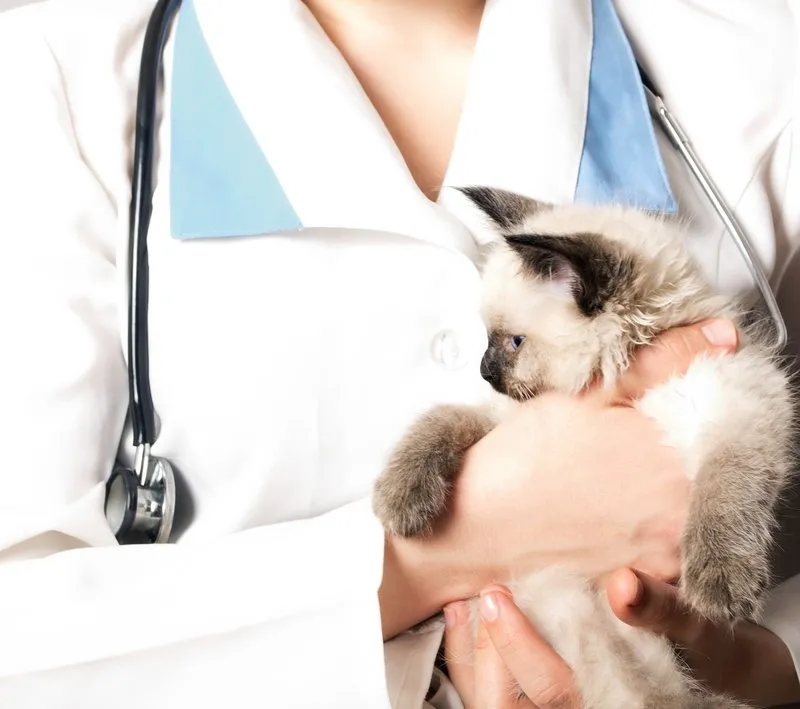Summer can be a very dangerous time for our feline pals. Fluffy can’t sweat if she overheats, so getting too hot can cause her to get very sick. This is definitely something for pet owners to keep in mind as the hot weather approaches. A local Roanoke, VA vet offers some advice on keeping your furry friend cool and comfy in this article.
Water
Make sure that your feline buddy always has plenty of fresh water! You may want to get Fluffy a kitty fountain: many cats prefer to drink running water. You can drop an ice cube into her bowl on hot days if you like.
Grooming
Cats are pretty good about cleaning themselves, but they can always use some help. Brushing Fluffy regularly will remove dead fur and dander from her coat. That will definitely help keep her cooler, as those things can interfere with the insulating properties of her coat. Regular grooming also allows you to check for any signs of health issues, such as lumps, bumps, or skin problems. If you notice anything concerning, schedule an appointment with our Veterinary Wellness & Pet Vaccinations services for a thorough check-up.
Cold Snacks
Who doesn’t enjoy a cool treat on a sweltering day? Fluffy may enjoy some chilled canned food or sodium-free broth. You can make a kitty version of a slushie by drizzling tuna juice and tuna over shaved ice. You can also find some lickable cat treats you can keep in the fridge or freezer.
Comfy Bed
Fluffy is very, very good at finding places to nap. (She can also fall asleep in spots and positions that seem extremely uncomfortable to us, but that’s another topic.) Hammock beds are good choices for summer, as the air moving beneath them helps keep them cool. To make an easy DIY one, just cut a piece of cloth to slightly smaller dimensions than the top of a table with four legs, and attach it. Then, just tell your furry pal to stay off it. Voila!
Exploration
Just giving your cat freedom to roam throughout the house can help keep her comfy. You may find Fluffy sprawled out on the kitchen or bathroom floor, or even in the tub. That’s because tile and ceramic tend to stay cool. You will need to keep an eye on your adventurous little furball, though, and make sure that she doesn’t get stuck in a hot shed or attic. If you’re looking to adopt a new feline friend, consider a shelter cat. October is the perfect time to do so, as it’s known as Catober: Celebrating Shelter Cats.
Our Tips for Preventing Heat Stroke In Cats in 2024
What are the specific signs and symptoms of heat stroke in cats?
Signs and symptoms of heat stroke in cats include excessive panting, drooling, and rapid breathing. Cats may also exhibit lethargy, vomiting, and staggering. Their gums and tongue might appear bright red or pale, and they could display signs of confusion or agitation. In severe cases, seizures or collapse can occur. Immediate action is required if these symptoms are observed, as heat stroke can be life-threatening. Cooling the cat gradually and seeking veterinary care promptly are crucial steps to ensure the cat’s safety and recovery.
Are certain breeds of cats more prone to overheating than others?
Certain breeds of cats are indeed more prone to overheating than others. Brachycephalic breeds, such as Persians and Himalayans, are particularly susceptible due to their shortened nasal passages, which make efficient cooling through panting more difficult. Long-haired breeds, like Maine Coons and Ragdolls, can also struggle in hot weather because their thick fur traps heat. These cats require extra care during summer months, including regular grooming to reduce excess fur and providing a cool, well-ventilated environment to prevent overheating and ensure their comfort and safety.
What is the ideal indoor temperature range for cats during hot weather?
During hot weather, the ideal indoor temperature range for cats is between 75 and 80 degrees Fahrenheit. Maintaining this temperature helps prevent overheating and ensures a comfortable environment for your feline friend. Use fans or air conditioning to keep the indoor climate cool and consistent. Additionally, provide plenty of fresh water and create cool resting spots, such as tile floors or shaded areas. Monitoring the indoor temperature and ensuring adequate ventilation can significantly reduce the risk of heat-related issues and keep your cat safe and comfortable during the summer months.
How can cat owners safely and effectively cool down a cat that is showing signs of overheating?
To safely and effectively cool down a cat showing signs of overheating, move the cat to a cool, shaded area immediately. Offer fresh, cool water to encourage hydration. Use a damp cloth to gently moisten the cat’s fur, focusing on the head, neck, and paws. Avoid using ice or very cold water, as this can cause shock. Ensure good air circulation with fans or air conditioning. Monitor the cat closely and seek veterinary attention promptly if symptoms persist or worsen, as heat stroke can be life-threatening and requires professional care.
Are there any specific dangers associated with using fans or air conditioning to cool cats?
Using fans or air conditioning to cool cats is generally safe, but there are specific considerations to keep in mind. Ensure that fans are placed securely to prevent tipping and that cats cannot get too close to the blades. Avoid directing strong airflow directly at the cat, as this can cause discomfort or respiratory issues. With air conditioning, maintain a moderate temperature to prevent the environment from becoming too cold, which can lead to respiratory problems. Regularly clean filters to ensure air quality, and always provide options for the cat to move to a warmer spot if desired.
Please do not hesitate to reach out with questions or concerns about your pet’s health or care. As your local Porters Lake, NS animal clinic, we are here to help!



